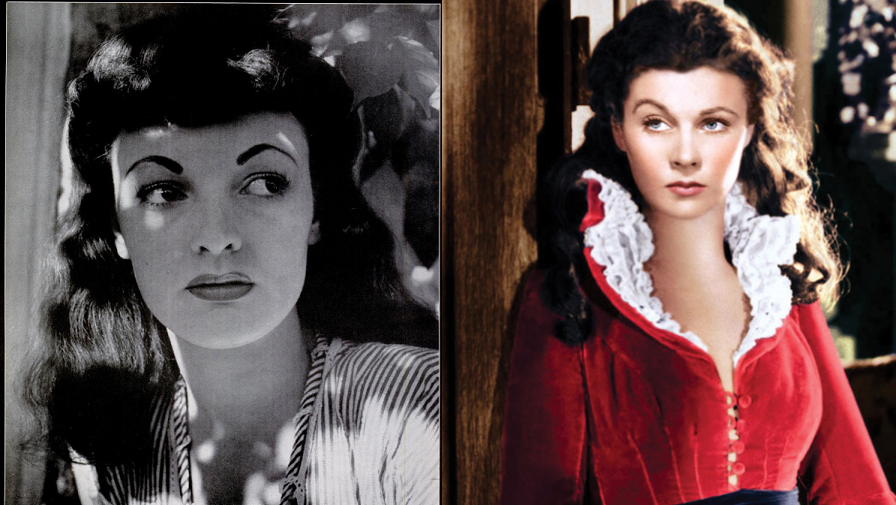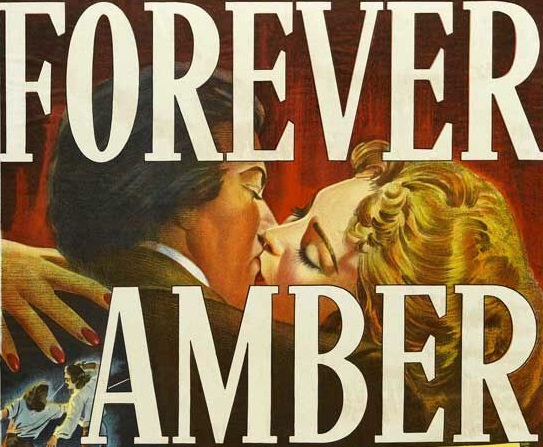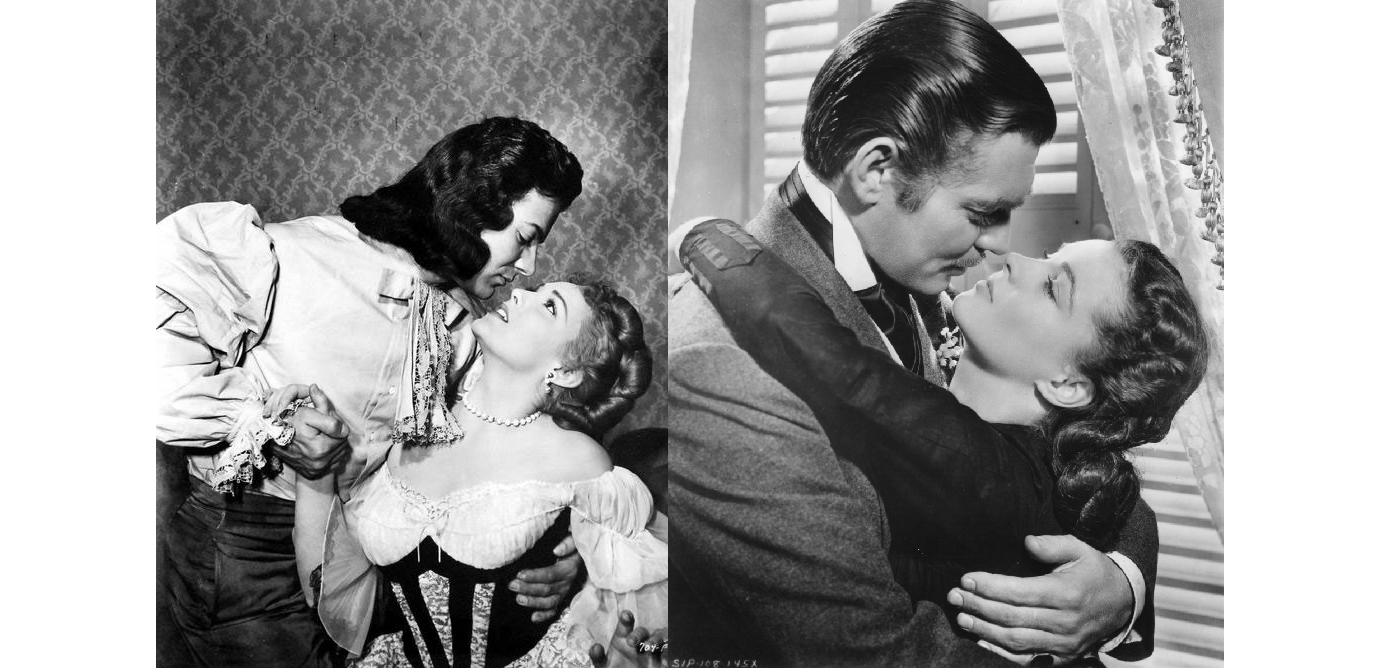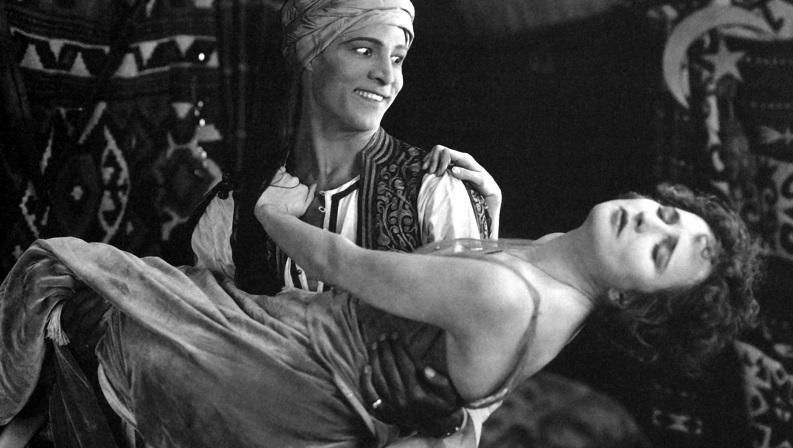Friends, readers, literateurs, I’m behind on my intended reading schedule. I finished Rebecca in April and here we are six weeks later and I’ve only managed 30% of Forever Amber. My excuses, which boil down to “life happens,” might not be acceptable to a professor, but that’s the beauty of the DIY MFA. It’s my own schedule, and my own syllabus. I could just drop this book – isn’t 300 pages enough? – but I did put it on my reading list for a reason. Part of what I was looking for as I built the syllabus was the books which were the 50 Shades of Gray for previous generations: books consumed voraciously by (mostly female) readers and disparaged by the powers that be. Forever Amber fits that description.
Let’s start with the original New York Yimes review of the book in October 1944. Under the headline “Jumbo Romance of Restoration England,” the reviewer opens with the assertion that
few characters in fiction are more beloved by female readers than the successful harlot.
So you can see his assessment of females and their contribution/appreciation of Literature from the get go. He points out that Winsor’s only previous published writing was a “a series of articles on football (from the woman’s angle) published in a California paper,” tells us that
Her book is thrown together with a fine disregard for repetition or pattern. Its style is a wonderful, wide-eyed parroting of the godzooks school. History is blended recklessly with fiction, to include all the angles of seventeenth-century England that Miss Winsor feels an urge to examine.
and finally finishes with the admission that
even the most hardened reviewer must bow his head before this glittering melange, and admit that Macmillan has a hit on its hands, perhaps second only to “Gone With the Wind.” For Miss Winsor is a born storyteller, for all her turgid amateur writing, her incredible sentiment and her hot-house appraisal of history. She knows how to keep that story moving–even when, as one often suspects, she hasn’t the slightest idea of where it is taking her, or why.
A review is really a subjective thing, so let’s throw some numbers in here. (Many of these come from articles on a Pinterest board from user instalove, who also collected the covers I’ve used as the header image.) Interviews and articles with Winsor include her own accounting of the book’s creative process: nearly 400 books read for research, three-six drafts of the novel totalling more than 2 million words, 1,303 hours reading, 380 hours indexing her notes, 3,284 hours writing, to create an 11 pound manuscript she sent to New York by express mail in a box from her butcher which had originally contained ham.
She received a $5,000 advance and Macmillan started with a first printing of 100,000 (or 175,000), including 750 which Winsor autographed before publication. Macmillan, hoping for a second Gone With the Wind, pushed the book hard: Life Magazine reported a $20,000 outlay for advance advertising. They also pushed Winsor into the public eye, sending the young author on what we now call a book tour.
The articles invariably describe her as pretty, which probably didn’t hurt her sales. One article even speculates that she might play the lead in a film version of her own book: she didn’t, but I do think she bears a noticeable resemblance to Vivien Leigh as Scarlett O’Hara in publicity photos. It’s not her facial features so much as the hairstyle and heavy eyebrows and I find myself wondering if that was part of the marketing.

The book got another big marketing boost by being banned in Boston, as well as in 14 additional states, Australia, and by the Catholic Church. According to The Guardian,
In banning the book, the Massachusetts attorney general had listed 70 references to sexual intercourse, 39 illegitimate pregnancies, seven abortions, 10 descriptions of women undressing in front of men, and 49 “miscellaneous objectionable passages”.
All of that worked out to later editions of the book trumpeting sales numbers on the cover: over 3 million. By 1948, Winsor had received gross royalties of $680,000 — that’s somewhere in the neighborhood of $7 million in 2018 dollars., and sold the film rights for another $200,000. By 1948, she was also divorcing her second husband and trying to figure out how her assets had shrunk to $10,000 but the point is, this book was a Big Deal.
So even though I am torn between being angry at the 1944 reviewer for his sexist take and wondering if he’s correct in his assessment and the “turgid” writing is preventing me from getting into the story, I’m going to persevere and get through it. It’s an important part of the historical arc of naughty books for women (and for WWII soldiers, apparently) and at some point, Amber’s going to finally make more than eye contact with the king, and maybe her original lover will return, since she still pines for him intermittently…




One Comment on “Forever Amber reading update”
Comments are closed.